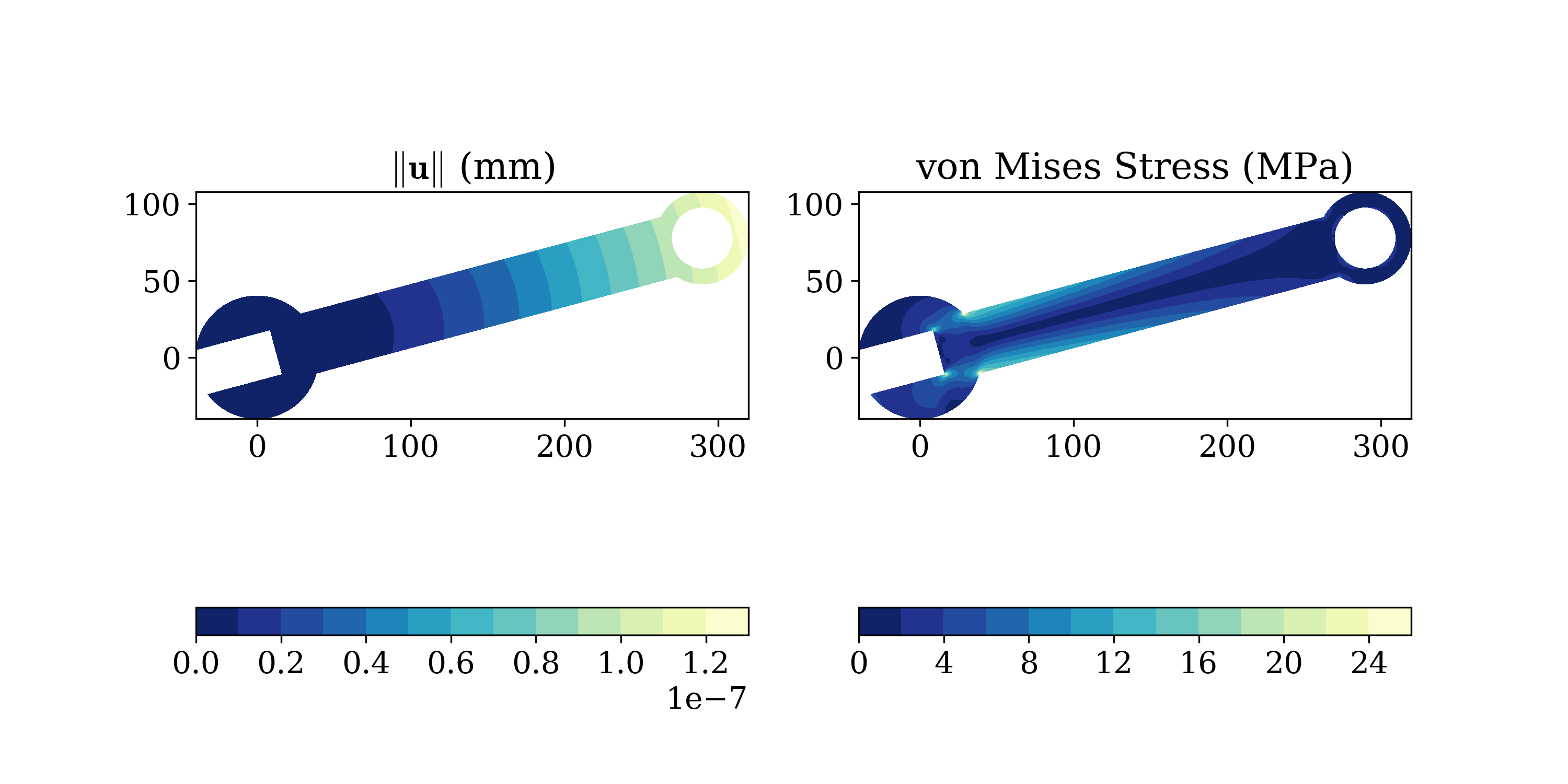

A simple finite element analysis code for 2D elasticity problems. The code uses as input simple-to-create text files defining a model in terms of nodal, element, material and load data.
- Documentation: http://solidspy.readthedocs.io
- GitHub: https://github.com/AppliedMechanics-EAFIT/SolidsPy
- PyPI: https://pypi.org/project/solidspy/
- Free and open source software: MIT license
- It is based on an open-source environment.
- It is easy to use.
- The code allows to find displacement, strain and stress solutions for arbitrary two-dimensional domains discretized into finite elements and subject to point loads.
- The code is organized in independent modules for pre-processing, assembly and post-processing allowing the user to easily modify it or add features like new elements or analyses pipelines.
- It was created with academic and research purposes.
- It has been used to tech the following courses:
- Computational Modeling.
- Introduction to the Finite Element Methods.
The code is written in Python and it depends on numpy, scipy and
sympy. It has been tested under Windows, Mac, Linux and Android.
To install SolidsPy open a terminal and type:
pip install solidspy
To specify through a GUI the folder where the input files are stored you will need to install easygui.
To easily generate the required SolidsPy text files out of a Gmsh model you will need meshio.
These two can be installed with:
pip install easygui pip install meshio
For further explanation check the docs.
Let's suppose that we have a simple model represented by the following files (see tutorials/square example for further explanation).
import numpy as np
from solidspy.solids_GUI import solids_auto
### Define the data
nodes = np.array([
[0, 0.00, 0.00],
[1, 2.00, 0.00],
[2, 2.00, 2.00],
[3, 0.00, 2.00],
[4, 1.00, 0.00],
[5, 2.00, 1.00],
[6, 1.00, 2.00],
[7, 0.00, 1.00],
[8, 1.00, 1.00]])
cons = np.array([
[0, -1],
[0, -1],
[0, 0],
[0, 0],
[-1, -1],
[0, 0],
[0, 0],
[0, 0],
[0, 0]])
elements = np.array([
[0, 1, 0, 0, 4, 8, 7],
[1, 1, 0, 4, 1, 5, 8],
[2, 1, 0, 7, 8, 6, 3],
[3, 1, 0, 8, 5, 2, 6]])
mats = np.array([[1.0, 0.3]])
loads = np.array([
[2, 0.0, 1.0],
[3, 0.0, 1.0],
[6, 0.0, 2.0]])
data = {"nodes": nodes,
"cons": cons,
"elements": elements,
"mats": mats,
"loads": loads}
### Run the simulation
disp = solids_auto(data)
plt.show()Save it as example_solidspy.py and run it in your terminal:
python example_solidspy.pyThis project is licensed under the MIT license. The documents are licensed under Creative Commons Attribution License.
To cite SolidsPy in publications use
Juan Gómez, Nicolás Guarín-Zapata (2018). SolidsPy: 2D-Finite Element Analysis with Python, <https://github.com/AppliedMechanics-EAFIT/SolidsPy>.
A BibTeX entry for LaTeX users is
@software{solidspy,
title = {SolidsPy: 2D-Finite Element Analysis with Python},
author = {Gómez, Juan and Guarín-Zapata, Nicolás},
year = 2018,
keywords = {Python, Finite elements, Scientific computing, Computational mechanics},
abstract = {SolidsPy is a simple finite element analysis code for
2D elasticity problems. The code uses as input simple-to-create text
files defining a model in terms of nodal, element, material and
load data.},
url = {https://github.com/AppliedMechanics-EAFIT/SolidsPy}
}